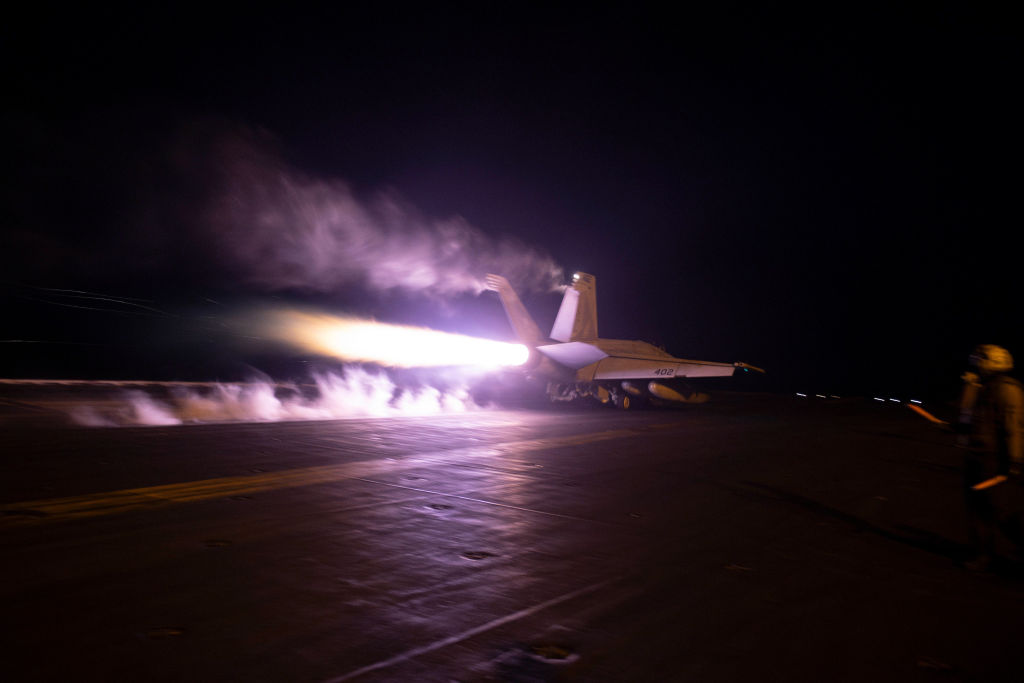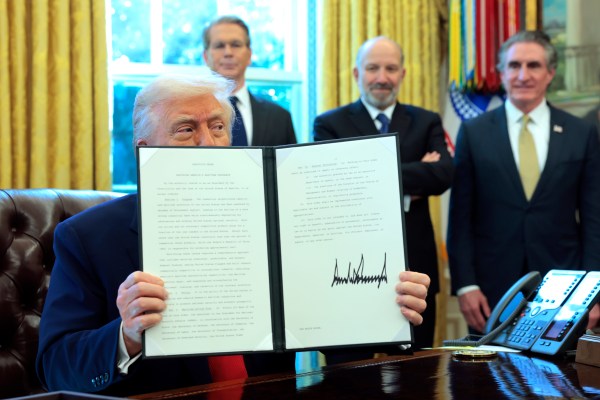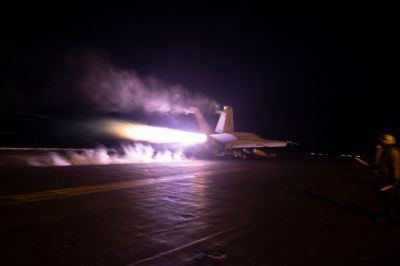The U.S. military planning process is understandably opaque for most people. To the public’s eye, a typical military action—such as when U.S. and British forces struck Iran-backed Houthis in Yemen last month—starts with an event that threatens our interests somewhere in the world. Then talking heads banter about whether we should do something about it, then late one night things go boom.
But the military personnel who carried out those attacks didn’t awake that day to orders to attack and then start pulling out charts. They had been practicing the tactics they’d need since their deployment training cycle began, as much as 18 months prior. The attacks in Yemen were based on United States Central Command (CENTCOM) operational plans (OPLANS). Those sailors and aircrew had been refining their intelligence and plans right up to the point of execution and rehearsing those plans with other joint and coalition forces.
It’s a key element for the U.S.’s 11 joint combatant commands, which are made up of multiple U.S. military service branches coalesced around one overall mission.
Why does the U.S. military have joint commands?
Joint commands’ sole purpose is to have plans on the shelf for virtually any contingency, anywhere in the world.
The joint commands’ existence is because of the failure of Operation Eagle Claw, the U.S. military’s attempt to rescue American hostages from the U.S. Embassy in Tehran in 1980. Its postmortem highlighted a critical deficiency in the U.S. military’s ability to plan and execute joint operations between the Army, Air Force, Navy and Marine Corps. Up to that point, services essentially operated in silos, deconflicting operations and generally avoiding each other rather than leveraging each other’s capabilities. When they actually had to rely on one another late at night in the Iranian desert, things predictably went south.
Congress codified Eagle Claw lessons by passing the Goldwater-Nichols Defense Act in 1986, which directed the services to integrate their operations from the ground up. It mandated that the services train officers to plan and operate together with a joint professional military education curriculum and required those officers to serve in joint commands and build the plans that would guide future joint operations.
The result was joint forces integrating their capabilities to optimize what each service brings to a given fight. The key, it turned out, was to shift focus from the service chiefs to the joint combatant commands and give them the tools and personnel to plan and execute truly joint operations.
How are joint commands organized, and how do they operate?
There are 11 combatant commands: six geographic (Africa Command, Central Command, European Command, Indo-Pacific Command, Northern Command, and Southern Command) and five functional (Space Command, Cyber Command, Special Operations Command, Strategic Command, and Transportation Command).
Each has joint planning staffs with officers from each service who have been certified through education and experience to create OPLANS that are eventually approved by the secretary of defense.
Even if OPLANS are never executed, they form the basis for each service’s acquisition, training, and readiness strategies. The services man, train, and equip forces at combatant commanders’ disposal for whatever mission the president orders. Certain coalition partners—such as British forces in the case of the attack on the Houthis last month—also participate by providing planners and forces to combatant commanders, albeit with varying degrees of capabilities and allowable missions.
Of course, unfolding events never exactly match the plan on the shelf. That’s why Dwight Eisenhower said, “Plans are nothing, planning is everything.” Basic plans covering weaponeering, logistics, air defense suppression, search and rescue, and other areas are in place for each combatant commander and the problems they may face. They are then tweaked in real time for individual contingencies. Getting these plans approved by the secretary of defense, and often the president himself, is one of the primary peacetime responsibilities for a combatant command staff.
How standard is the planning process?
The whole process is guided by the planner’s bible, Joint Publication 5-0 Joint Operation Planning. The document is massive, with an executive summary that runs 30 pages. Multiple war college courses are dedicated to the task of studying the entire document. It lays out the joint planning process from defining a problem at the very beginning of the planning phase to sending the execute order when the president says “go.”
Combatant commanders follow the document meticulously, not because it creates the perfect plan, but because going through the process creates a deep understanding of a given problem and capabilities required to address it.
Like any large and complex endeavor, the joint planning process has its costs and benefits. Its primary benefit is the ability to quickly respond to virtually any threat anywhere in the world and efficiently use all available combat power.
But it’s also expensive to build and maintain dozens of plans that may or may not ever be used. Joint staffs generally have around 1,000 personnel and are broken down into directorates (typically indicated by J0-J8). Each “J code” performs a different function, such as logistics or operations, and has the tools and expertise to carry out their pieces of the command’s mission. A combatant command’s J5 planning directorate—typically headed by a two-star general or admiral—is often the largest and most senior staff in the command.
The planners themselves generally come from combat specialties, which means that the planning shops are always undermanned because they’re drawing from the same talent pool as tactical units. And they are susceptible to the same group think and public choice theory outcomes that plague any large bureaucracy, such as cherry-picking intelligence to support desired actions or capabilities. And there is the added challenge that the vast majority of planning products will never be tested in a real conflict. So you have high performing and motivated officers working on products for which there is no known end state and only hypothetical evaluation criteria.
But joint planning and execution works. Virtually every military operation carried out today includes elements from at least two services and were planned in a joint headquarters. Whether it’s Air Force drones supporting Army movements in the desert or Navy ships supporting special operations forces intercepting contraband weapons at sea, service components are planning and executing joint missions somewhere virtually every day.
The process has been so successful that China’s People’s Liberation Army has completely reorganized and is trying to emulate it. Other countries send their best and brightest to our war colleges to learn it. Russia has seen the results of poor planning and joint coordination in Ukraine. And the expanding battlefield with real-time intelligence and hypersonic weapons require constant communication and coordination between all combat elements. That only works if it’s baked into the plan.





Please note that we at The Dispatch hold ourselves, our work, and our commenters to a higher standard than other places on the internet. We welcome comments that foster genuine debate or discussion—including comments critical of us or our work—but responses that include ad hominem attacks on fellow Dispatch members or are intended to stoke fear and anger may be moderated.
With your membership, you only have the ability to comment on The Morning Dispatch articles. Consider upgrading to join the conversation everywhere.